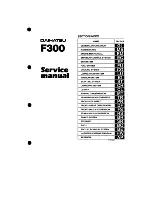
The radiator normally remains completely full, so there is
no need to remove the radiator cap unless checking for
engine coolant (antifreeze) freeze point or replacing cool-
ant. Advise your service attendant of this. As long as the
engine operating temperature is satisfactory, the coolant
bottle need only be checked once a month. When addi-
tional engine coolant (antifreeze) is needed to maintain
the proper level, it should be added to the coolant bottle.
Do not overfill.
Points To Remember
NOTE:
When the vehicle is stopped after a few miles/
kilometers of operation, you may observe vapor coming
from the front of the engine compartment. This is nor-
mally a result of moisture from rain, snow, or high
humidity accumulating on the radiator and being vapor-
ized when the thermostat opens, allowing hot engine
coolant (antifreeze) to enter the radiator.
If an examination of your engine compartment shows no
evidence of radiator or hose leaks, the vehicle may be
safely driven. The vapor will soon dissipate.
•
Do not overfill the coolant expansion bottle.
•
Check the coolant freeze point in the radiator and in the
coolant expansion bottle. If engine coolant (antifreeze)
needs to be added, the contents of the coolant expansion
bottle must also be protected against freezing.
•
If frequent engine coolant (antifreeze) additions are
required, the cooling system should be pressure tested
for leaks.
•
Maintain engine coolant (antifreeze) concentration at a
minimum of 50% OAT coolant (conforming to MS-
12106) and distilled water for proper corrosion protec-
tion of your engine which contains aluminum compo-
nents.
7
MAINTAINING YOUR VEHICLE
449
Summary of Contents for 2014 Avenger
Page 1: ...Avenger O W N E R S M A N U A L 2 0 1 4 ...
Page 4: ......
Page 7: ...1 INTRODUCTION 5 ...
Page 10: ......
Page 104: ......
Page 140: ...138 UNDERSTANDING THE FEATURES OF YOUR VEHICLE ...
Page 141: ...3 UNDERSTANDING THE FEATURES OF YOUR VEHICLE 139 ...
Page 142: ...140 UNDERSTANDING THE FEATURES OF YOUR VEHICLE ...
Page 211: ...INSTRUMENT CLUSTER 4 UNDERSTANDING YOUR INSTRUMENT PANEL 209 ...
Page 212: ...INSTRUMENT CLUSTER R T 210 UNDERSTANDING YOUR INSTRUMENT PANEL ...
Page 286: ...284 UNDERSTANDING YOUR INSTRUMENT PANEL ...
Page 347: ...5 STARTING AND OPERATING 345 ...
Page 424: ......
Page 486: ......
Page 497: ...INDEX 10 ...
















































